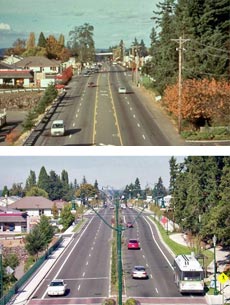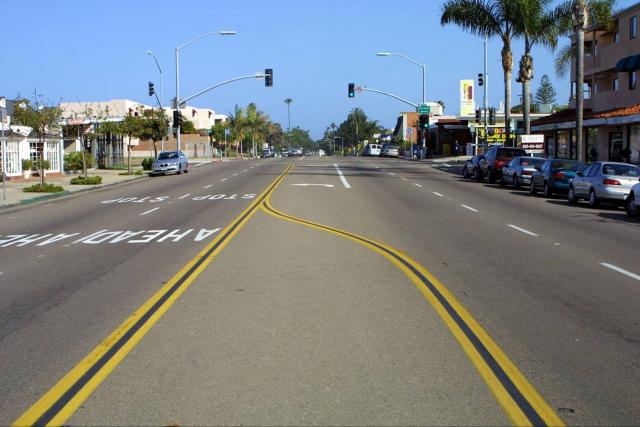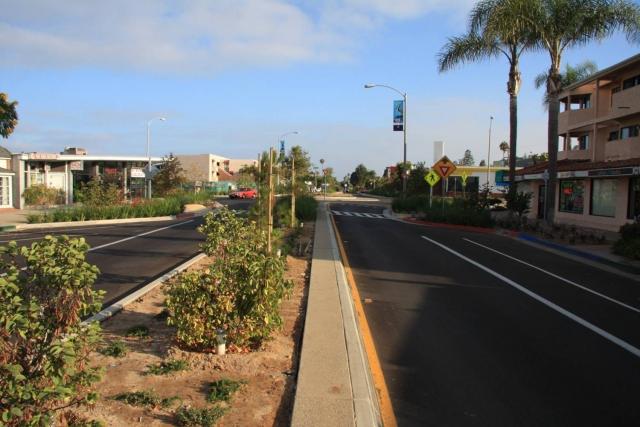Congress takes a step towards “completing America’s streets”
 |
| Before and after of a complete street. Tell Congress to support complete streets. |
Did you know that almost half of all the trips we take each day are under three miles? So why aren’t more of us walking or biking for some of these shorter trips each day? Frankly, most of our streets just aren’t designed for safe and comfortable use by everyone — and almost all of us are pedestrians at some point during each day.
Complete streets are safe and accessible for everyone that needs to use them — cars, transit users, bicyclists, pedestrians, young, old, disabled, and everyone else.
Over the last two days, Complete Streets bills have been introduced in both the House and Senate.
Introduced by Sen. Tom Harkin in the Senate, and Rep. Doris Matsui in the House, these bills need our support — and more congressional sponsors. (Sen. Tom Carper and Rep. Ellen Tauscher, Rep. Carolyn Maloney, and Rep. David Wu are the current co-sponsors.)
Complete streets make it possible for children to walk and bike to school safely, give seniors more security traveling to appointments, and provide everyone with safer, greener and more convenient ways of getting around without their cars.
Photos of La Jolla, California before and after by Dan Burden
For the last few years, local governments have been the ones leading the way. More than 80 state and local governments have passed ordinances mandating that new road construction provide a full menu of transportation options to meet the needs of everyone using the road. As you can see from the quote from Mayor Diaz in Miami at right, mayors — and the cities they lead — have seen and experienced the immeasurable benefit that complete streets provide for their communities.
Now we need Congress to take the next step.
| “Rates of childhood obesity have tripled in recent years, and mayors clearly understand that this is due in large part to the lack of a pedestrian infrastructure. In opening streets to multiple modes of transportation, we are enabling a more active lifestyle by providing the option to get out of cars. America’s mayors strongly endorse transportation policies that integrate transportation, energy, environmental and public health.” |
| – Mayor Manuel A. (Manny) Diaz, President, US Conference of Mayors, Miami |
With these bills in Congress, we have a chance right now to make sure our streets are safe and inviting for everyone who uses them — not just those driving cars.
The Complete Streets Act (H.R. 1443 and S. 584) would direct state and metropolitan transportation authorities to adopt and implement complete streets policies for upcoming federally-funded transportation projects.
Complete streets provide a full menu of transportation options to meet the needs of everyone using a road — pedestrians, cyclists, the disabled, and users of public transportation. They are cost-effective because they save money on retrofits and reduce congestion, improving conditions for existing businesses and attracting new development. They help us reduce our oil dependence by making it easier for people to leave their cars at home. And complete streets improve safety for everyone and encourage healthy and active lifestyles, saving all taxpayers money in future health care costs.
From the National Complete Streets Coalition release:
The gradual conversion to complete streets will reduce crashes, deaths, and injuries, particularly the almost 5,000 annual fatalities and 70,000 injuries among vulnerable road users such as pedestrians and bicyclists, including older Americans and children. Studies have found that designing for pedestrians by installing raised medians and redesigning intersections and sidewalks reduces pedestrian risk by 28 to 40 percent, and some treatments reduce automobile crashes as well.
More resources:
» Press release from Rep. Matsui’s office.
» Press release from Sen. Harkin’s office.
» More about Complete Streets from T4 coalition member The National Complete Streets Coalition.
» Guest post from Barbara McCann with the CS Coalition at the Infrastructurist
» Read the press release from the National Complete Streets Coalition. (pdf)
» Questions? Ask away in the comments. Some experts might stop by to answer.






















Pingback: The Bike Pittsburgh Blog Archives » The Headlines: 3.13.09
Pingback: The Bike Pittsburgh Blog Archives » The nation’s bike advocates storm the castle at the National Bike Summit, DC
Pingback: Complete Streets Bills Re-Introduced | m-bike.org
Pingback: Weekly Roundup | Walking Twin Cities
Pingback: Complete Streets Act | LJUrban.com | Dream Big. Live Small. Do Good. | LJUrban.com